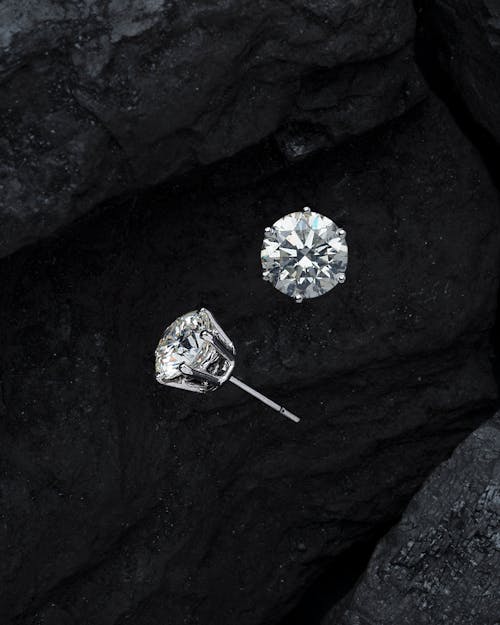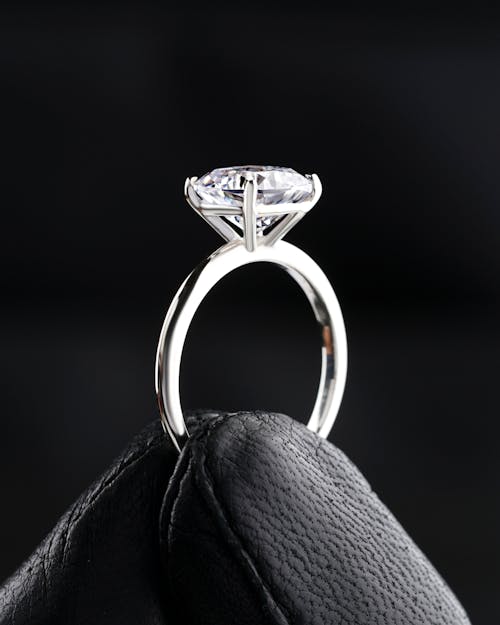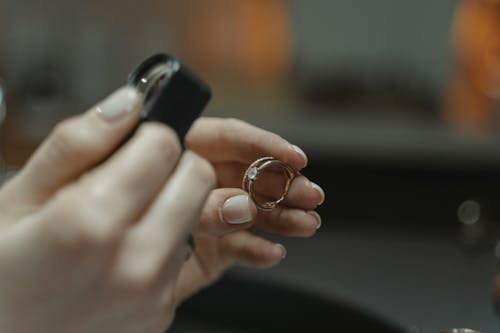How to Tell if a Diamond Is Real: A Complete Guide for Shoppers and Collectors
Diamonds are among the most sought-after and treasured gems in the world, but with that prestige comes a significant amount of imitation. Whether you’re buying a diamond engagement ring, receiving heirloom jewelry, or investing in precious stones, knowing how to tell if a diamond is real is essential. With so many fakes on the market—from cubic zirconia to moissanite—it can be difficult to distinguish a genuine diamond from a clever counterfeit. The good news is, there are several reliable ways to test a diamond at home and professionally, using tools, techniques, and expert advice. In this guide, we’ll explore everything you need to know to identify real diamonds, avoid scams, and make smart decisions when buying or selling.
Why It’s Important to Verify a Diamond’s Authenticity
Diamonds are not just symbols of love—they are major financial investments. A single carat of natural diamond can cost thousands of dollars, and high-quality stones can go for far more. With stakes that high, knowing whether you’re dealing with a real diamond or a simulant is more than just curiosity—it’s about protecting your money and emotional investment. Many people inherit diamonds through family members, buy them as gifts, or purchase them for resale. In each of these cases, ensuring the stone’s authenticity is crucial.
Additionally, today’s market is flooded with synthetic and lab-grown diamonds, which are chemically identical to natural diamonds but can be significantly less valuable depending on the context. While lab-grown diamonds are still “real” in a scientific sense, they don’t always command the same resale or appraisal value as natural stones.

The Fog Test: A Simple First Step
One of the easiest ways to check if a diamond is real is to perform the fog test. This at-home method works on the principle that diamonds disperse heat quickly. To conduct the fog test, simply hold the diamond in front of your mouth and breathe on it, just as you would a mirror. If the diamond stays fogged for more than a second or two, it’s likely a fake. A real diamond will clear up almost instantly due to its high thermal conductivity.
While the fog test is not foolproof and can be influenced by the environment or your body temperature, it serves as a good initial check. If your stone passes the fog test, you can move on to more detailed methods for further verification. Remember, this technique works best when the diamond is clean and dry—dirt, oil, or lotion can affect the outcome and give you a false impression.
Water Test: Testing Density and Buoyancy
Another easy method is the water test, which takes advantage of a diamond’s high density. To perform this test, fill a glass with water and gently drop the loose stone into it. A real diamond will sink to the bottom because it is denser than most fake materials. Imitation diamonds, especially those made of glass or quartz, may float or hover mid-glass.
Keep in mind, this test only works if the diamond is loose and not set in a ring or pendant. Also, some synthetic stones like moissanite can mimic this sinking behavior, so while a diamond that floats is almost certainly fake, one that sinks still might need further testing. It’s a useful elimination step but not definitive.

Use of a Loupe or Magnifying Glass
A jeweler’s loupe—a small magnifying lens used in the trade—can help you examine the diamond more closely. Under magnification, a real diamond often shows small imperfections called inclusions or blemishes. These natural flaws are one of the hallmarks of authenticity. Most fake diamonds, such as cubic zirconia, are flawless because they are manufactured.
Also, look at the edges of the diamond. A real diamond will have sharp, crisp edges due to its hardness. A fake may have rounded or overly smooth edges from wear. If you don’t have a loupe, a magnifying glass and a bright light can help you spot these characteristics. This method does require a bit of practice, but it’s a great way to become more familiar with genuine diamond features.
The Scratch Test: Not Recommended for Valuable Jewelry
There’s a long-standing myth that you can test a diamond’s authenticity by scratching it against glass. Since diamonds are the hardest natural material, they will scratch most surfaces. While this is true, it’s not a recommended test for consumers. You could damage the glass—or more dangerously, chip or damage the setting or stone itself, especially if it’s a valuable or sentimental item.
Additionally, materials like moissanite are almost as hard as diamonds and will also pass the scratch test. This makes the test unreliable and unnecessarily risky for your jewelry. If you’re tempted to try this, we strongly recommend choosing one of the safer, non-invasive tests or consulting a professional instead.
The UV Light Test: Checking for Fluorescence
Another method used to tell if a diamond is real is exposure to ultraviolet (UV) light, also known as blacklight. Many diamonds will glow blue under UV light, though not all do. Fluorescence is a natural reaction in certain diamonds and can serve as an indicator of authenticity. Place the diamond under a blacklight and look for a faint blue glow.
However, this test isn’t definitive either. Some real diamonds won’t fluoresce at all, and some synthetic or treated stones might exhibit similar effects. So, while the UV light test can provide a clue, it should always be used in conjunction with other methods.

Heat Test: Testing Thermal Conductivity
Genuine diamonds disperse heat extremely well, which is why thermal conductivity testers are used in the jewelry industry to determine authenticity. These devices send heat into the stone and measure how quickly it dissipates. Diamonds will disperse heat rapidly, while imitations like cubic zirconia will hold onto the heat longer.
This is a more technical and accurate test, but it requires a diamond tester tool, which you can purchase online or at a jeweler’s supply store. It’s especially useful if you’re handling multiple stones or purchasing diamonds wholesale, where you need quick and accurate results. For businesses working with fine jewelry, tools like these can be game-changers—and they’re frequently listed on supplierscentral.com.
Professional Appraisal and Certification
While DIY tests are helpful, the most reliable way to confirm a diamond’s authenticity is to have it evaluated by a certified gemologist. Professionals use advanced equipment like microscopes, conductivity testers, and spectroscopy tools to determine whether a diamond is natural, lab-grown, or an imitation. They also provide official documentation that verifies the diamond’s quality, cut, clarity, and carat weight.
If you’re buying or selling high-value stones, always request a certificate from a recognized authority such as the Gemological Institute of America (GIA), American Gem Society (AGS), or International Gemological Institute (IGI). A professional appraisal also adds value and credibility to the stone, especially if you plan to list it for resale or insure it.

Lab-Grown vs. Natural Diamonds: What’s the Difference?
An important nuance in the world of diamonds today is the difference between natural and lab-grown diamonds. While both are chemically identical, lab-grown diamonds are created in a controlled environment, usually through High Pressure High Temperature (HPHT) or Chemical Vapor Deposition (CVD) methods. Natural diamonds form over billions of years beneath the earth’s surface.
While lab-grown diamonds are real in every physical sense, they tend to be more affordable and may not hold the same resale value. Many consumers and investors still prefer natural diamonds due to their rarity and long-term value. If you’re buying diamonds as an investment, knowing whether the stone is lab-created or natural is a crucial detail—and professional certification will tell you.
What About Moissanite, Quartz, and Cubic Zirconia?
There are many materials designed to look like diamonds, but each has its own unique properties. Moissanite is the closest competitor, offering near-identical sparkle and hardness, but it refracts light differently and often appears more “fiery.” Quartz and cubic zirconia are much softer and less brilliant. They may fool the eye at a glance, but close inspection or testing reveals their identity.
A diamond tester can quickly differentiate between these alternatives. When buying diamonds from unfamiliar sources or online, it’s wise to test for these imitators. The savings of buying “cheap diamonds” can backfire if the product turns out to be synthetic or fake.

Trusted Sources for Buying and Selling Diamonds
Whether you’re looking to buy diamonds or sell them, sourcing from a reputable supplier is key. Trusted marketplaces like supplierscentral.com connect verified sellers with buyers across the jewelry industry. You’ll find listings for loose stones, wholesale diamonds, finished jewelry, tools, and testing devices that are essential for authenticity checks.
When purchasing, always request certification and verify return policies. When selling, consider getting an appraisal to ensure you receive fair market value. A trusted platform can protect you from scams and give you the confidence needed in high-value transactions.

How to Tell if a Diamond Is Real: Final Thoughts
Knowing how to tell if a diamond is real isn’t just for jewelers—it’s essential knowledge for anyone who values their investment. With a mix of at-home tests and professional assessments, you can confidently identify real diamonds and steer clear of imitations. Whether you’re making a once-in-a-lifetime purchase, building a jewelry business, or passing on a family heirloom, understanding diamond authenticity can save you money and heartache.



